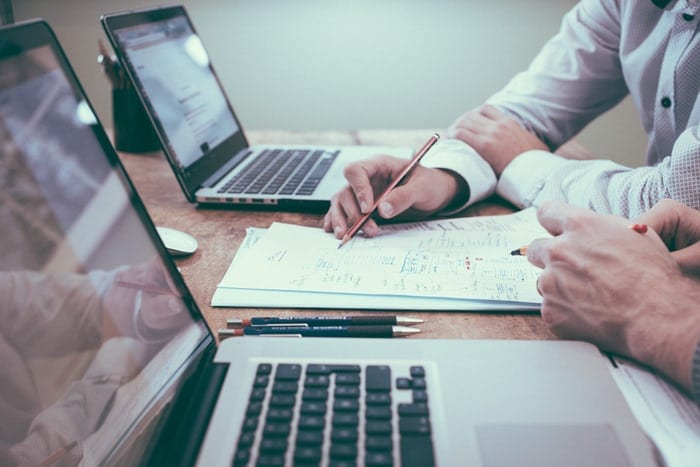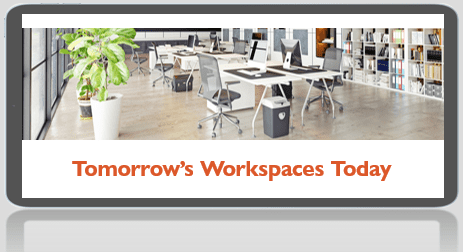Embrace this opportunity to design a sustainable workplace
As employers all over are evaluating how to make their offices secure, maybe it’s time to take a step back and think of the COVID-19 crisis as an opportunity for more positive change.
Right now, COVID-19 feels like the only talking point – and there’s no doubt it will inspire hygiene and health and safety trends for the foreseeable future.. But the biggest underlying trend in the workplace, and one that will be here long after memories of the pandemic are distant, is sustainability.
We’ve been encouraged to use takeaway cups again from coffee shops, plastic screens welcome us everywhere and there’s a rush to instigate quick-fix solutions to get people back to work – rather than thinking about how materials can be reused or re-purposed.
So, yes, sometimes a quick fix is important, but companies also need to think beyond that to plan for a sustainable future. We need to ensure those quick fixes don’t become like a hastily-built prefab classroom designed to last three years to survive a baby boom – but still there, dilapidated and dangerous, decades later.
For years we’ve been promising to change our workplaces when the time is right to join the circular economy. Now, with business at every level taking a breath, the opportunity is there to put sustainability at the core of our recovery.
As a country we’ve all had a taste of a different lifestyle during the pandemic, we’ve got used to working from home and traveling less – so it’s the right time for a re-evaluation of values and principles before we rush back to the old ways.
Here are six tips on how to embrace the circular economy as we create a new normal in the workplace:
- See the return to work after the pandemic as an opportunity
This is a vital mindset for businesses to have. Don’t rush into quick fixes, think about this as an opportunity for change in the workspace and not as a problem. - Re-assess your values as a business
This is the perfect time to show leadership. If businesses can reflect on their business models and their procurement decisions, they can become part of the circular economy. - Think about your long-term survival
Sustainability is here to stay, and it’s being embraced by millennials who will form 75 percent of the workforce by 2030. Having a sustainable business will be vital when it comes to recruitment in the future. - Focus on creating and using better products from sustainable sources
- Value and design products and services which ensure longevity
Products which are designed to last and can be re-used, re-sold, or refurbished are ultimately better for the environment – whether you are making them or buying them - Utilise products more efficiently
Does every workspace need every piece of equipment or would it be more efficient and better for the environment to share? Consider hiring as an alternative to owning, too.
Practical tips for re-designing the workspace post-Covid 19
It’s not all about philosophy, CSR, and social change, of course – there are also practicalities to consider in the way we design our workspaces post Covid-19, at a time when the pressure to get people back to work is increasing.
Here is a list of key things to consider when re-designing the workspace for the big return to work:
Make changes for the long term
Covid-19, we hope, will eventually be in retreat but its impact on the workplace will be felt for a long time. So, simply putting up Perspex screens everywhere is useful to get people back to work but is not a long-term fix. Having a well-designed, airy office in which people have allocated desks– plus a well-planned cleaning regime – fits a wider vision.
Hotdesking is still hotdesking even when the desks are further apart and protected by a screen, you are still turning up to sit somewhere where another person has been sitting. Rota systems are one answer, and some offices are considering specially designed capsules over the desk and computer as a long-term alternative to plastic screens. In a circular economy, long-term solutions are good solutions.
Choose the right materials
Not everything has to be plastic if you think long-term. Screens in reception, where people are unlikely to touch, could be glass and stainless steel, for instance, to create a more welcoming effect.
For those worried about the possibility of metal surfaces holding onto the virus, coatings are available to make that less likely. Additionally, copper not only looks great but is reported to hold the virus for a shorter period of time than other metals, so think about how you can use it in a new office design.
Embrace carpet tiles
The great thing about carpet tiles is they can be easily changed, cleaned, moved or re-used – which is much better for the environment. Rather than plastic stickers to show one-way routes, why not use carpet tiles with arrows on which look more permanent? When they begin to wear, they can be used elsewhere in the building – even inside cupboards or store rooms.
Consider air quality
This is a respiratory virus, so air quality is going to be a big part of office redesign. Having well maintained and regularly checked air conditioning systems
is a start, as is increasing natural air and light into a building when possible or using plants and biophilia to freshen up the air inside. This was a growing trend even before lockdown.
The bottom line is that enticing people back to work doesn’t have to end in ugly, unsustainable office spaces that look like a temporary fix in a bid to get around social distancing rules. We all have a real opportunity to take a step back and think about how we want the office of the future to look – and how we can make it sustainable, safe and beautiful.
Related stories
Around half of all Facilities Managers plan to downsize their office space in the next three years. How, and why?
The Giving Back Project recently donated office chairs to PAVS, enhancing their workplace and freeing up funds for vital community services.
As open-plan offices lose favour, is it time to bring back more personal, tailored workspaces? Discover how blending collaboration with individual focus areas can boost employee satisfaction and productivity.




























